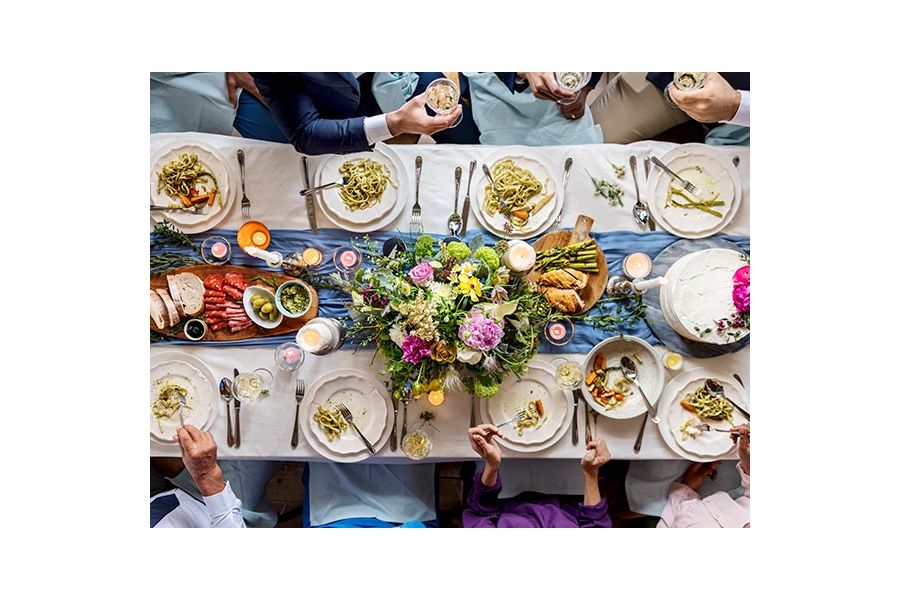Choosing the Right Meal Style for Your Reception

When it comes to reception food, modern couples aren’t limited to traditional 3-course sit down meals. Between buffets, food stations, food trucks, cocktail-style meals and more, the possibilities are practically endless. So, how do you choose the right meal style for your wedding?
One of the biggest factors for meal style is the budget. A buffet is often the most cost-effective option, but it can vary depending on the venue. Guest count, too, is a very important consideration.
“The most common mistakes I see are guests not coordinating the dinner with speeches,” says Kasey Greenheck, founder of Kase Styles in Wisconsin. “You don't want guests standing in line for the buffet while speeches are happening you want them to be attentive.”
And don’t forget about the guest experience. Do you want a formal, black-tie affair or something more casual and laid-back? Your meal style should match the overall wedding atmosphere.
“Do what fits the vibe of the wedding,” advises Greenheck. “You can be different! Work with the venue they might be more accommodating than you think.”
Here’s an expert breakdown of the pros and cons four of the most popular wedding reception meal styles.
Style 1: Plated
This is a formal, multiple course dinner served to seated guests. Caterers typically offer guests two to three entrée options, which are pre-selected.
Pros
• Guests can stay seated and remain attentive for speeches. This prevents long lines, messy buffets and potential spills.
• Since caterers know exactly how much of each dish will be served, there’s less chance for waste.
• It’s the perfect match for a more sophisticated style wedding in a hotel or other upscale venue.
Cons
• It’s typically a more intensive planning process since you need guests to provide their selections, allergies, preferences or intolerances.
• It can be costlier, especially since it requires more wait staff.
Style 2: Buffet
A buffet consists of long tables with all of the dishes in a long line with servers to distribute appropriate portions to guests.
Pros
• This is usually a more cost-effective option and is easier to coordinate.
• Guests can choose from more diverse options, which is great for those with dietary restrictions.
Cons
• Buffet tables take up extra room and guests have to stand in line, which can be chaotic.
• Guests have to transport food, which can be less than elegant and lead to accidents.
Style 3: Food Stations
This serve-yourself style meal has become increasingly popular in recent years. Food stations allow you to break up food displays with different tables rather than a single long buffet.
Pros
• It allows for more creative presentations and food options, such as sushi bars, omelet stations or dessert tables.
• More tables spread throughout the space reduce the likelihood of lines.
• Multiple stations promote interaction and mingling among guests.
Cons
• It is more chaotic with guests moving about, which isn’t conducive to speeches.
• It’s not very space effective, so you’ll need plenty of space to accommodate enough food stations.
• You’ll need to hire more staff to man the different stations, which adds you to your catering bill.
Style 4: Family Style
Family-style receptions are similar to plated dinners since guests remain seated, but waiters bring larger portions of food for guests to serve themselves – just like at home.
Pros
• It’s more efficient since guests don’t have to wait in line and can save money since it requires fewer servers.
• You don’t have to worry about guests getting up for seconds or milling about during speeches.
Cons
• Food can get cold or run out if guests overfill their plates.
• Serving platters take up more room on the table, which means less décor.
Copyright © CTW Features